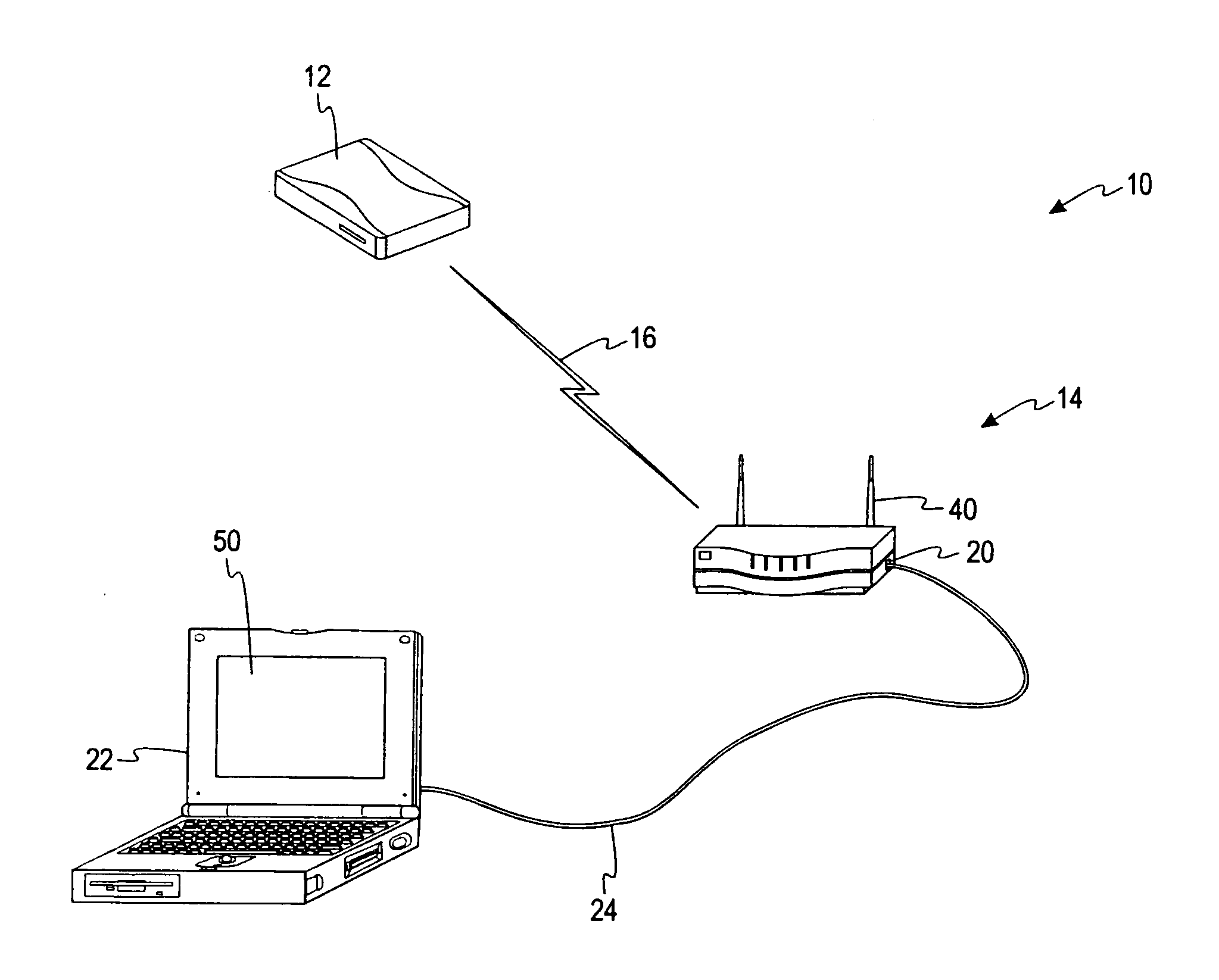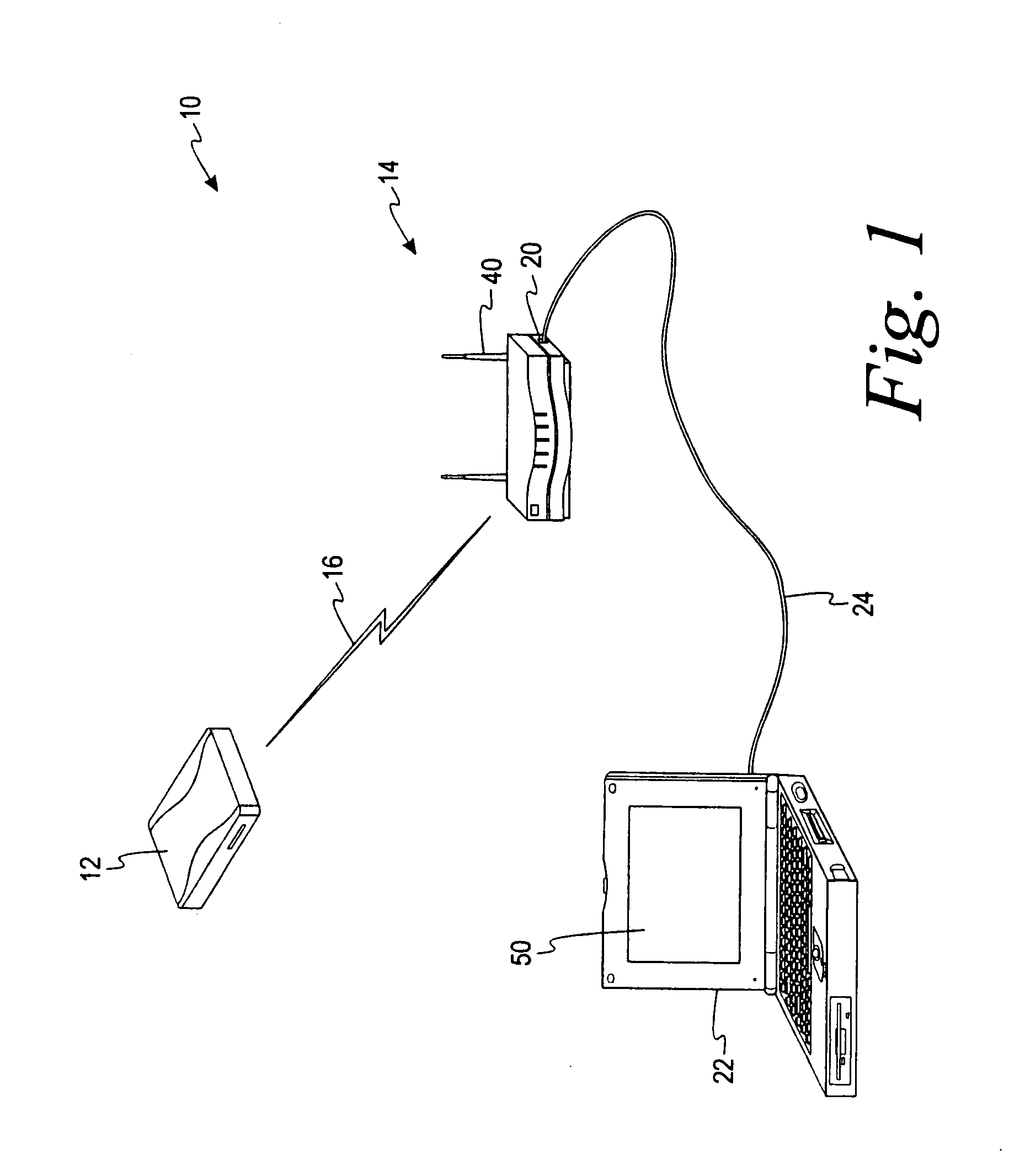Wireless analyte monitoring system
a monitoring system and analyte technology, applied in the field of wireless analyte monitoring system, can solve the problems of loss of data signals, inconvenient and invasive procedures, and undesirable blood drawing
- Summary
- Abstract
- Description
- Claims
- Application Information
AI Technical Summary
Benefits of technology
Problems solved by technology
Method used
Image
Examples
embodiment a
Alternative Embodiment A
[0067]A system for monitoring a concentration of an analyte in a fluid or tissue sample comprising:
[0068]a sensor module adapted to be borne on a patient, the sensor module including a power supply adapted to provide a transmission power, a first transceiver adapted to transmit analyte-concentration information, and a memory; and
[0069]a remote monitoring device adapted to wirelessly communicate with the sensor module, the remote monitoring device including a second transceiver adapted to receive the analyte-concentration information transmitted by the sensor module and adapted to transmit a signal to the sensor module confirming that the analyte-concentration information was received,[0070]wherein the information is stored in the memory until the signal is received by the sensor module.
embodiment b
Alternative Embodiment B
[0071]The system of Alternative Embodiment A, wherein the sensor module includes a transdermal test sensor or an insertable sensor.
embodiment c
Alternative Embodiment C
[0072]The system of Alternative Embodiment A, wherein the analyte is glucose.
PUM
 Login to View More
Login to View More Abstract
Description
Claims
Application Information
 Login to View More
Login to View More - R&D
- Intellectual Property
- Life Sciences
- Materials
- Tech Scout
- Unparalleled Data Quality
- Higher Quality Content
- 60% Fewer Hallucinations
Browse by: Latest US Patents, China's latest patents, Technical Efficacy Thesaurus, Application Domain, Technology Topic, Popular Technical Reports.
© 2025 PatSnap. All rights reserved.Legal|Privacy policy|Modern Slavery Act Transparency Statement|Sitemap|About US| Contact US: help@patsnap.com



